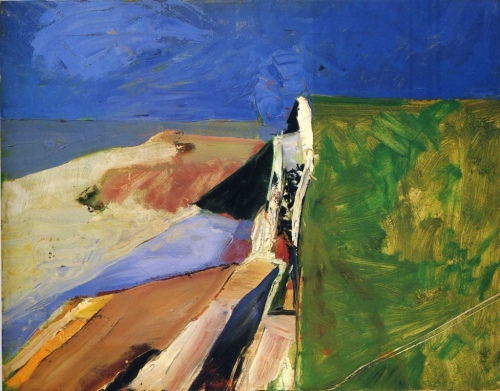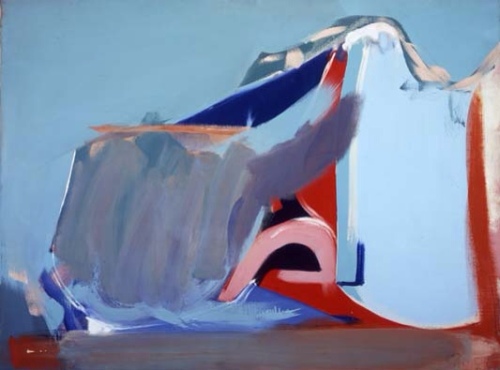Jeremy Gardiner, one of the world's leading landscape painters currently practicing, in my opinion, has kindly listed some of his influences on his beautiful website. This enabled me to have a look at some of the work from the painters he mentioned. I am very familiar with Peter Lanyon and visited his major retrospective at Tate St Ives Cornwall several years ago. I believe Peter Lanyon is of equivalent importance to De Kooning certainly from a British perspective but for some reason his work has been largely overlooked internationally. His early death and his affinity to a particular part of England, far away from the London art scene may have had some role to play in this.
Richard Duebenkorn is completely new to me and I found his work very interesting and I will spend more time in investigating his work, particularly as it relates to the connection with Jeremy Gardiner's work.
I felt the visual link between the 3 artists could be evidenced in the 3 samples I included here. There is clearly a deeper connection but my post was attempting to simply initially indicate how across a period of 60 years there can be seen an exciting development in the progression of ideas from Diebenkorn to Gardiner. I think one can see that Gardiner's painting is the most recent in terms of the chronology of its style and for me it is fascinating to see what in one sense is a finer refinement of ideas across a large span of time.
There is a constant progression such that each new generation takes on the task of contextualising their new ideas of form into the existing structures that are present through the chronology of previous art. Diebenkorn could not have painted Gardiner's image because he didn't have the context historically to paint it. He made the incremental shift that his artistic sensitivity allowed but he can only come to the canvas in the time in which he paints. His feelings are an amalgamation of what he brings in the context of his world, his experiences and existing history. One cannot transcend experience but one can move to its edges. Experience is contextual thus a person in 1950 cannot see the world as a person in 2013. Their talent, dedication and craft may be the same but time facilitates an essential difference.
These images express to me how painting still remains alive, vibrant and beautiful and shows that in another 60 years artists will be producing yet another set of new ideas that the time they live in will allow them to make. Those artists hence will have the benefit of other artists; trials, errors, disappointments and successes and they will learn to make new work that moves the medium forward again. Each generation takes on the responsibility to study from the previous generations and to then make their own art relevant to the time they occupy.
Jeremy Gardiner has an extraordinary CV and clearly his art is a result of a life long study of other painters work and a life long commitment to his craft.


